RESEARCH DIRECTOR EMERITUS @CNRS
Magneto Induced Catalysis with Organometallic Nanoparticles
Laboratoire de Physique et Chimie des Nano-Objets UMR 5215, INSA, UPS, CNR – Université de Toulouse, 135 avenue de Rangueil 31077 Toulouse (France)
Magnetic nanoparticles (MNPs) display both interesting core physical properties and interesting surface chemical properties. The composition of the particles allows to modulate their magnetic properties in terms of saturation magnetization, magnetic anisotropy and Curie temperature and hence heating power. Thus magnetic nanoparticles heat when submitted to an alternating magnetic field. Magnetic heating is instantaneous and in principle the best way to transform electrical energy into heat.
We have developed in Toulouse a new generation of iron based nanoparticles (NPs) of unprecedented heating power. We have prepared iron carbide particles by carbidization of preformed monodisperse Fe(0) nanoparticles under a CO/H2 atmosphere at 150°C. They consist essentially of crystalline Fe2.2C, display a SAR (heating power) of up to 3.3 kW/g and are able to hydrogenate CO2 into methane in a flow reactor after addition of a catalytic Ru or Ni layer and excitation by an alternating magnetic field.1 Iron Cobalt NPs have been prepared from {Fe[N(TMS)2]2}2 and the relative {Co[N(TMS)2]2}2,. These soft magnetic bimetallic FeCo NPs2 with a high Curie Temperature allow performing high temperature catalytic reactions such as propane dehydrogenation or methane and propane dry reforming. Iron nickel nanoparticles have been synthesized from iron amide and nickel amidinate precursors and found very active for CO2 hydrogenation. In addition, submitting nanoparticles of iron carbide or iron nickel to magnetic heating in solution leads to high local over-heating and to perform in apparent mild conditions and under a low H2 pressure difficult reactions typically performed at high temperature and pressure such as such as hydrodeoxygenation of biomass derived platform molecules. Magneto-induced catalysis was also attempted in solution. In this case, it is possible to measure a temperature at the surface of the MNPs much higher than the mean temperature of the solvent (for example, 236°C in toluene for a mean temperature of 110°C).
The lecture will briefly present the synthesis and properties of “organometallic” nanoparticles particles, their magnetic properties, their surface modification to deposit a catalytic layer and their catalytic properties. This will concern heterogeneous CO2 hydrogenation1,3 and other heterogeneous reactions in a flow reactor4 as well as reactions in solution, namely hydrodeoxygenation or hydrogenolysis of biomass derived platform molecules.5,6 temperature measurements.7 Further developments of the technique for various applications including water electrolysis will also be described.8References:
1. A. Bordet et al. Angew.Chem.Int. Ed. 2016, 55,15894 –15898
2. C. Garnero et al. Nano Letters 2019, 19, 1379-1386
3. D. De Masi et al. . Angew. Chem. Int. Ed. 2020, 59, 6187-6191
4. J. Marbaix et al. ACS Applied Nano Materials 2020, 3, 3767-3778
5. J.M. Asensio et al. Angew. Chem. Int. Ed. 2019, 58, 11306-11310
6. I. Mustieles Marin et al. Green Chem 2021, 23, 2025
7. Z.J. Diaz Puerto et al. Nanoscale 2021, 13, 12438-12442
8. C. Niether et al. Nature Energy 2018, 3, 476-483


